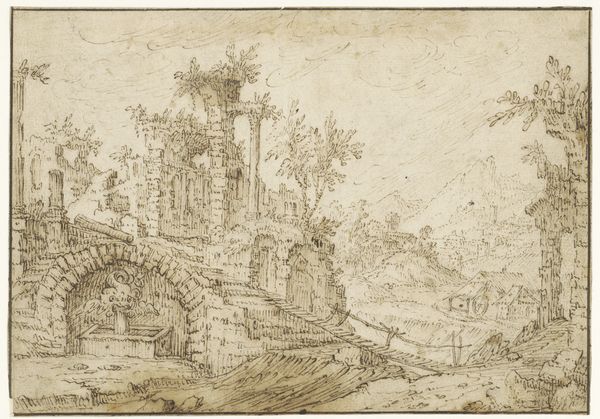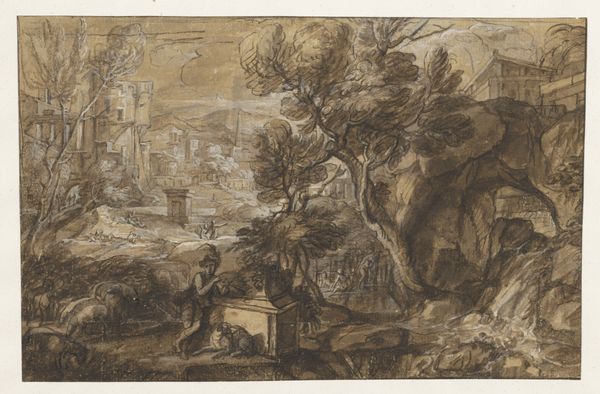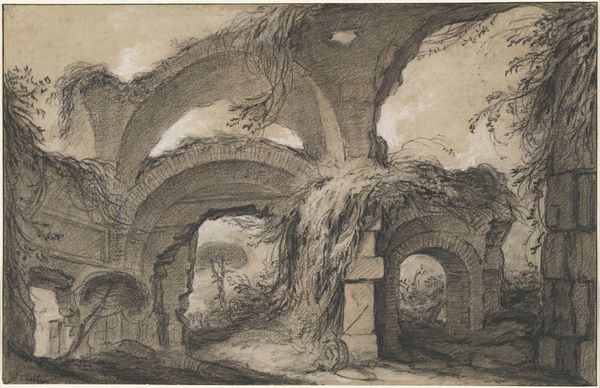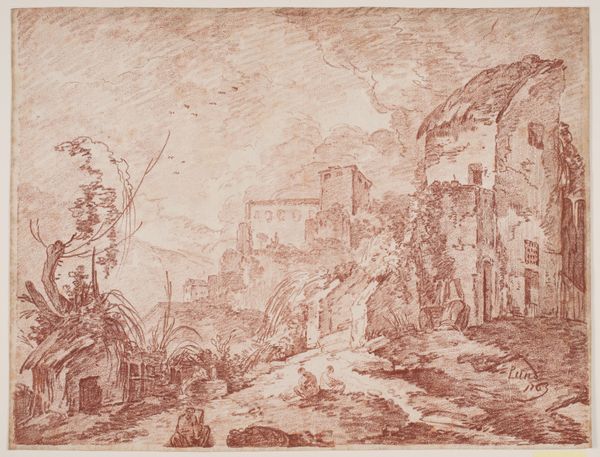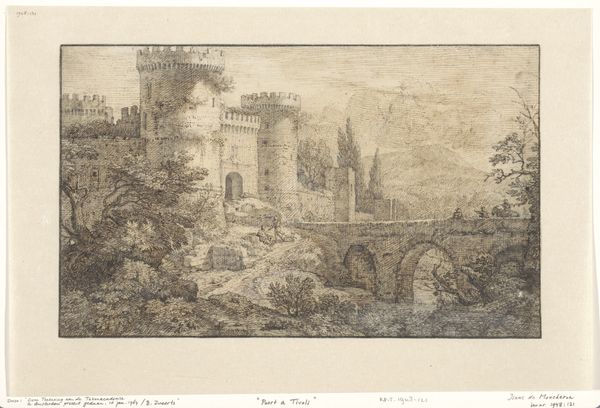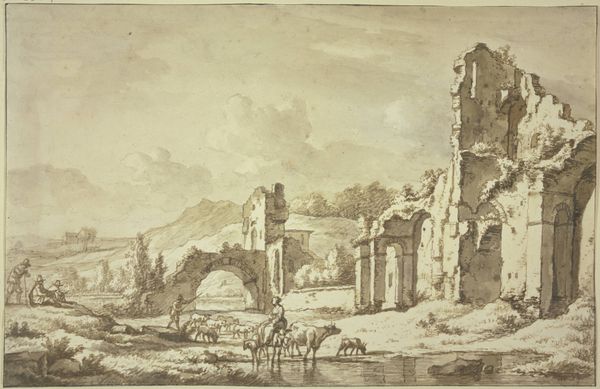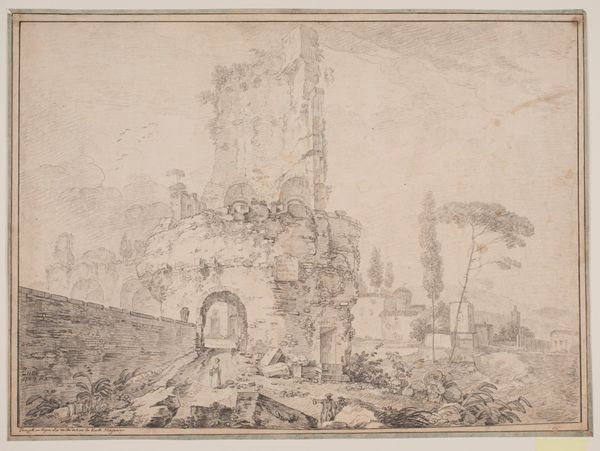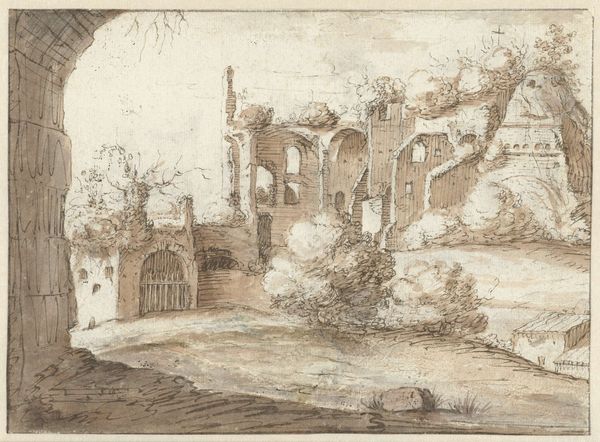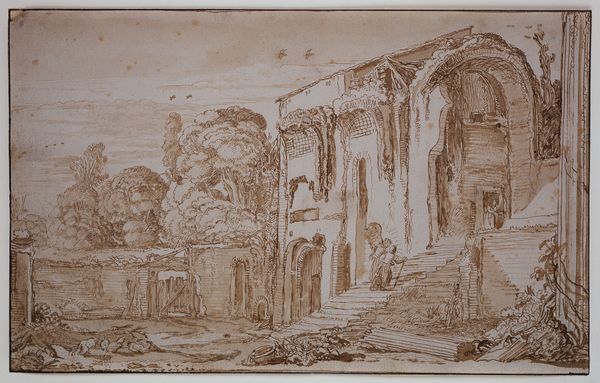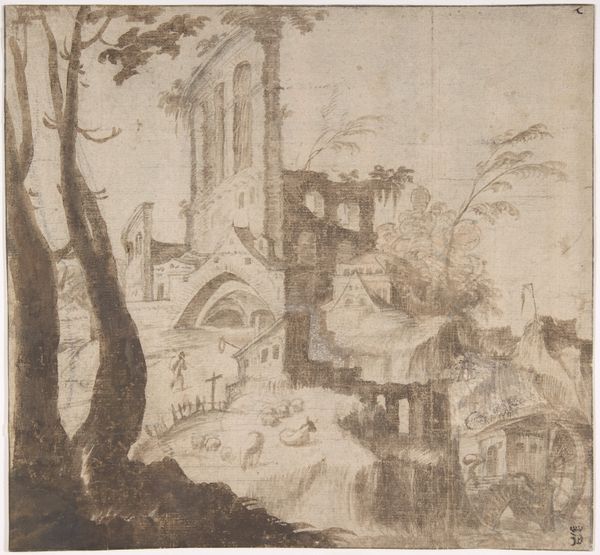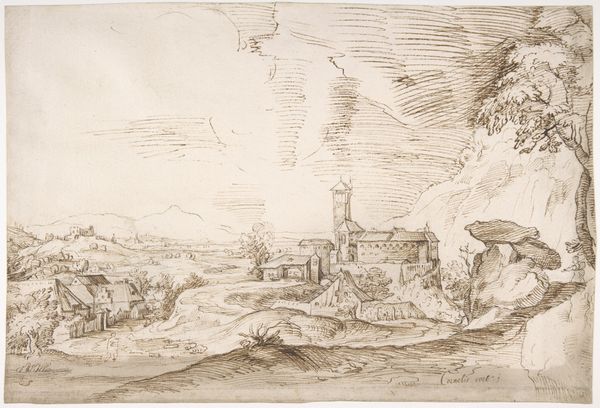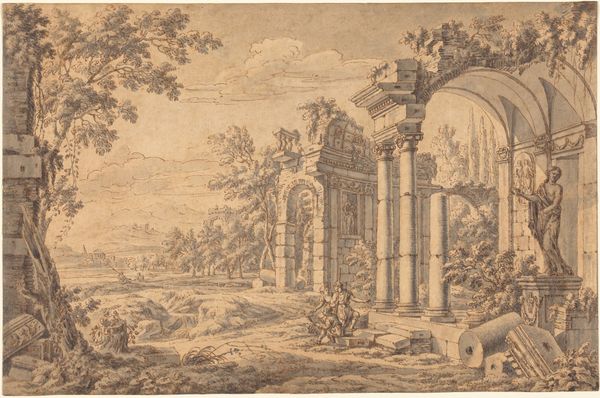
drawing, ink, pen
#
drawing
#
baroque
#
dutch-golden-age
#
landscape
#
ink
#
pen
#
cityscape
Dimensions: Sheet: 10 13/16 x 15 in. (27.4 x 38.1 cm)
Copyright: Public Domain
Curator: Hendrick van Minderhout gives us "The Gate of Bruges at Sluis" from 1661, currently held at the Metropolitan Museum of Art. It’s pen and ink on paper. Editor: My immediate feeling is melancholy. There's a beautiful decay to it, this quiet crumbling of structures – and then these tiny figures just casually perched amongst it all. Are they simply witnessing, like us? Curator: Indeed. Consider the social implications of depicting this scene in the Dutch Golden Age. Sluis was a strategic port; representing its infrastructure, even in decline, spoke to broader shifts in trade routes and naval power. The very act of committing ink to paper meant navigating a complex market for art materials—the paper itself having passed through various merchant hands before ever reaching Minderhout. Editor: I get that on one level, the economic network underpinning art creation… but look at the almost whimsical lines he uses. The loose hatching gives texture to the stone, makes you feel the weight of those arches, or that slightly listing tower in the distance. It's so tactile. It almost makes me nostalgic for something I've never known! Curator: Right. Tactility underscores the interaction of the laborer, of Minderhout himself as he bends over the paper, engaging with the materials to generate an image circulated through other exchanges… These are sites once bustling hubs of maritime commerce; the decay evident speaks not just of aesthetic choice, but societal shifts. It serves as a subtle commentary on the ephemeral nature of power and the relentless march of time, even amidst economic boom. Editor: Time certainly holds all things ransom! I also see the figures grouped as if frozen in contemplation. I wonder what narratives they construct amidst these aging walls? Is it solace, warning, or a kind of acceptance that things erode even while new things arise? Curator: Precisely. The dialogue between the enduring stone and transient human form captures those dualities that characterized Dutch society and shaped markets as well. Editor: I am just drawn back to how simply the marks render the entire vista. The work makes me imagine drawing was like dreaming, seeing possibilities where everyone else just passes through—to sense more under the surface than what might initially appear. Curator: An insightful personal impression, given that we observe, the networks that sustained both the making and potential interpreting continue their endless movement!
Comments
No comments
Be the first to comment and join the conversation on the ultimate creative platform.
